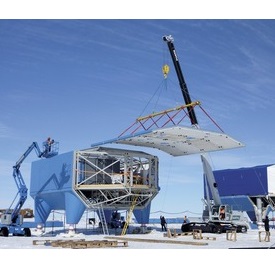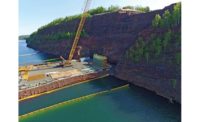Contractors regularly fret over jobsite safety, but few have faced the challenges Peter Willmott met in bringing his workforce home in one piece from Antarctica, where even summer temperatures plummet to -25° C and howling winds create white-out conditions.

By implementing a carefully planned safety strategy, Willmott, a contracts manager with Galliford Try, overcame these dangers and led his crew of 80 to successfully assemble the Halley VI Antarctic Research Station. Workers logged more than 250,000 hours without a single recordable incident.
"Safety is important wherever you are working, but it's extremely important in the Antarctic because we don't have a hospital within a close radius—it's thousands of miles away," Willmott says.
The innovative science station stays above the snow using stilted telescopic legs that can be jacked up several meters. The legs also allow the station to be easily relocated, thanks to giant custom-built skis.
Harsh weather conditions and sea-ice constraints gave builders a scant 12-week construction window each year. As a result, the 1,510-sq-meter project took more than four years to complete.
The contractor conducted extensive pre-planning sessions. Willmott says the key to success was emphasizing safety to each worker—individually and for the team.
"You have to make safety a priority and not just pay lip service to it," he says. "People want to do a job safely, but they have to feel involved in the safety ethos."





Post a comment to this article
Report Abusive Comment